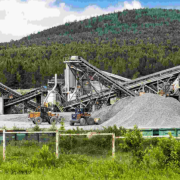In recent years, the concept of ESG (Environmental, Social, Governance) has increasingly become a focal point in global business practices, particularly in industries like oil and gas. With a growing emphasis on sustainability and responsible business practices, investors, regulatory bodies, and consumers are placing more pressure on companies in the oil and gas sector to align their operations with ESG goals. These goals are not only seen as an ethical or regulatory obligation but are also becoming a key consideration in investment decisions.
The integration of ESG criteria into oil and gas investments presents both opportunities and challenges for stakeholders in the industry. For investors, understanding how ESG factors influence the valuation, risk, and long-term viability of oil and gas companies is essential. On the other hand, for oil and gas companies, aligning with ESG objectives is crucial to maintaining competitiveness and attracting investment in an increasingly sustainability-conscious market. This article will delve into the significant role ESG goals play in shaping oil and gas investments, focusing on the environmental, social, and governance dimensions, and how they impact both the investment landscape and company performance.
Understanding ESG and Its Relevance to Oil and Gas Investments
ESG refers to the three central factors used to measure the sustainability and societal impact of an investment in a company or business. The concept has gained traction over the past few decades as investors, governments, and corporations acknowledge the growing importance of responsible and sustainable business practices. While ESG considerations are applicable across industries, they have become particularly significant in sectors such as oil and gas due to the high environmental impact, regulatory scrutiny, and social considerations associated with these industries.
-
Environmental:
- This pillar addresses how companies impact the natural world. In the oil and gas sector, it includes factors such as carbon emissions, pollution, water usage, and the management of natural resources. For companies, meeting environmental goals may involve reducing carbon footprints, adopting cleaner technologies, and minimizing ecological damage.
-
Social:
- The social aspect of ESG pertains to the relationships a company maintains with its employees, customers, communities, and other stakeholders. This includes issues like worker safety, human rights, community impact, and customer satisfaction. For oil and gas companies, this also encompasses relationships with indigenous populations, local communities, and addressing the potential displacement caused by oil and gas exploration.
-
Governance:
- Governance focuses on the structure and practices that guide a company’s leadership and decision-making processes. This pillar encompasses transparency, ethical conduct, executive compensation, regulatory compliance, and stakeholder engagement. In the context of oil and gas investments, governance can influence how well a company navigates regulatory challenges and manages the interests of various stakeholders, including investors, governments, and local communities.
The integration of ESG factors into investment strategies has reshaped the oil and gas sector in several profound ways. These considerations are no longer seen as “nice to have” but have become integral to how companies and investors approach business decisions. Investors are increasingly viewing ESG performance as a key indicator of a company’s long-term success, while oil and gas companies are recognizing that aligning with ESG principles can enhance their reputation, reduce operational risks, and unlock new opportunities for capital.
The Environmental Impact of ESG Goals
The environmental dimension of ESG is perhaps the most visible and pressing for oil and gas companies. The oil and gas industry has long been associated with significant environmental risks, including carbon emissions, air and water pollution, habitat destruction, and climate change. With growing concerns about the environment, many stakeholders, including investors, regulators, and consumers, are demanding that oil and gas companies take stronger actions to mitigate their environmental impact.
-
Carbon Emissions and Climate Change:
- Oil and gas companies are major contributors to greenhouse gas emissions, particularly carbon dioxide. With the global push to limit global warming and address climate change, there is mounting pressure for oil and gas companies to transition to cleaner energy sources, reduce emissions, and implement strategies to offset their carbon footprints. Investors are increasingly wary of companies that fail to prioritize decarbonization, as climate-related risks—such as regulatory penalties, stranded assets, and reputational damage—can undermine profitability and long-term value.
-
Sustainability Initiatives and Clean Energy:
- In response to this pressure, many oil and gas companies are shifting their business models to include renewable energy investments. This includes diversifying into solar, wind, hydrogen, and biofuels, as well as adopting carbon capture and storage (CCS) technologies. Investors are increasingly considering how well companies integrate clean energy and sustainability into their long-term strategies. Companies that embrace innovation and invest in sustainable practices are often seen as better positioned to thrive in a low-carbon future.
-
Environmental Risk Mitigation:
- Oil and gas companies are also working to reduce other environmental risks associated with exploration, drilling, and extraction. This includes minimizing the impact of drilling operations on local ecosystems, reducing water usage, and ensuring that operations are compliant with environmental regulations. The financial implications of these efforts—such as investing in more sustainable technologies and meeting stricter environmental standards—are often factored into investment decisions. Companies that demonstrate a proactive approach to environmental risk management tend to attract more investment and can command higher valuations.
ESG Social Considerations
The social aspect of ESG goals is also critical for oil and gas companies, particularly given the often contentious relationship between these companies and the communities in which they operate. As the world increasingly prioritizes social justice, human rights, and corporate responsibility, oil and gas companies must navigate a complex web of social considerations.
-
Community Engagement and Social Responsibility:
- The oil and gas industry has a history of operating in remote or indigenous areas where resource extraction can significantly impact local communities. Local populations have raised concerns about land displacement, disruption of livelihoods, and environmental degradation. In response, many oil and gas companies have improved community engagement, provided compensation, and invested in local infrastructure and development projects. These companies increasingly view social responsibility efforts as essential components of their ESG strategy, influencing both their reputation and the willingness of investors to support their operations.
-
Human Rights and Labor Practices:
- Oil and gas companies face growing scrutiny over labor practices, particularly in developing countries where working conditions can be poor. Investors are becoming more conscious of the human rights record of companies, especially those operating in regions with weak labor laws or human rights abuses. Companies that fail to address these concerns risk losing investor confidence and facing boycotts or sanctions. On the other hand, those that champion human rights, promote fair labor practices, and ensure safe working conditions are often viewed more favorably by investors and stakeholders alike.
-
Health and Safety:
- Health and safety standards are of paramount importance in the oil and gas industry, given the inherent risks involved in exploration and production. Companies that fail to protect workers and ensure safety measures are in place can face significant legal, reputational, and financial risks. Investors increasingly consider health and safety performance when evaluating potential investments, as incidents can lead to costly litigation, operational downtime, and damage to brand reputation.
Governance Factors in Oil and Gas Investments | ESG
Governance, as a key pillar of ESG, involves how oil and gas companies are managed and governed. Strong governance practices are crucial for attracting investment, managing risks, and ensuring the long-term success of the company.
-
Board Structure and Transparency:
- Investors and stakeholders scrutinize the governance of oil and gas companies, particularly in areas such as board structure, executive compensation, and decision-making transparency. Investors seek companies with clear governance structures, where leadership decisions align with the interests of shareholders and other stakeholders. A well-structured board of directors that ensures proper oversight of management indicates a company’s long-term viability.
-
Regulatory Compliance:
- Regulators impose stringent laws on the oil and gas industry to govern environmental standards, labor practices, and corporate behavior. Companies that fail to comply with these regulations risk legal penalties, loss of licenses, and reputational damage. As such, investors often evaluate the regulatory compliance history of companies before making investments. A company with a strong track record of adhering to environmental, social, and corporate governance regulations is likely to attract more investor interest.
-
Risk Management and Ethical Conduct:
- Ethical conduct and risk management are essential elements of governance. In an industry as volatile and high-risk as oil and gas, effective risk management practices are crucial. Companies with strong risk management frameworks—focused on environmental risks, political instability, market fluctuations, and operational hazards—are more likely to generate stable returns. Moreover, companies that emphasize ethical conduct in their operations, avoiding corruption, bribery, and other unethical practices, tend to foster greater investor confidence.
The Financial Implications of ESG Integration in Oil and Gas Investments
Integrating ESG goals into oil and gas investments can have significant financial implications, both positive and negative. Investors who embrace ESG principles often seek out companies that not only perform well financially but also prioritize sustainability and responsible corporate behavior. These investors believe that companies with strong ESG performance are more likely to thrive in the long term, as they better equip themselves to navigate the challenges and risks associated with environmental and social issues.
- Access to Capital: Companies with strong ESG credentials are increasingly able to access capital more easily. Institutional investors, such as pension funds and asset managers, often have mandates that require them to prioritize ESG considerations in their portfolios. As a result, oil and gas companies that align with ESG goals may benefit from a broader pool of investors, leading to lower capital costs and higher valuations.=
- Long-Term Investment Appeal: Companies that integrate ESG factors into their operations are often better positioned for long-term success. By addressing environmental risks, maintaining strong governance practices, and fostering positive social relationships, these companies are likely to enjoy more sustainable growth. For investors with a long-term horizon, this sustainability makes ESG-compliant companies an attractive option.
- Risk Mitigation: Integrating ESG goals can help mitigate risks associated with environmental disasters, regulatory penalties, and social conflicts. Oil and gas companies that fail to address these issues may face significant financial penalties, reputation damage, and even the loss of operations. By proactively addressing ESG factors, companies can reduce the likelihood of negative outcomes and increase investor confidence.
Impact of ESG
The impact of ESG goals on oil and gas investments is far-reaching and continues to shape the future of the industry. With growing awareness of environmental, social, and governance issues, oil and gas companies are under increasing pressure to integrate sustainability and responsible practices into their operations. For investors, ESG performance is no longer an afterthought but a critical component in the decision-making process.
As the demand for cleaner energy, ethical practices, and strong governance continues to rise, companies in the oil and gas sector must adapt to this new reality to remain competitive and attract investment. The integration of ESG considerations into oil and gas investments offers a path toward greater sustainability, profitability, and long-term success for both companies and investors alike. For stakeholders in the oil and gas industry, understanding the evolving role of ESG is essential to navigating the future of energy investments.
If you have further questions related to ESG, feel free to contact us here.










